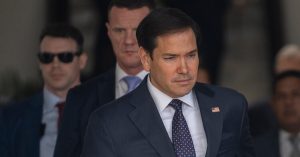Utahraptor State Park, Utah’s newest state park, is set to open this spring, offering expanded recreation opportunities near Moab while preserving significant paleontological and historical sites.
Established in 2021, the park has undergone infrastructure development, including roads, trails, campsites, and a visitor center, to accommodate public use.
The park spans 6,500 acres and is located about 15 miles northwest of Moab, a gateway city to Arches and Canyonlands National Parks.
Previously accessible primitive camping areas remain open with a $15 nightly fee. Officials aim to balance recreational access with the protection of the park’s unique fossil deposits and historic sites.
Scott Strong, director of the Utah Division of State Parks, described the area’s rich fossil presence, telling the Natural Resources, Agriculture, and Environmental Quality Appropriations Subcommittee, “You can almost pick up a rock … put it on your tongue, and if it sticks you know you’ve got a dinosaur bone. They’re just everywhere out there.”
According to an article published by Town Life, more than 5,500 dinosaur fossils have been excavated from the site, including remains of the Utahraptor, a predator measuring up to 20 feet long.
In addition to its fossil sites, Utahraptor State Park includes Dalton Wells Quarry, an area of historical importance. The site, originally a Civilian Conservation Corps camp during the 1930s, was later repurposed as a World War II internment camp for Japanese American citizens.
The park will also cater to outdoor recreation enthusiasts. With direct access to all-terrain vehicle (ATV) and mountain biking trail systems, it offers additional adventure options in the already popular Moab region. The visitor center will also provide resources for exploring the area’s natural and historical features.
According to the Utah State Parks website, planned amenities include a modern campground, flush restrooms, showers, an entrance station, and trailheads connecting to nearby OHV and biking networks. These developments align with state efforts to enhance outdoor access while protecting sensitive areas.







